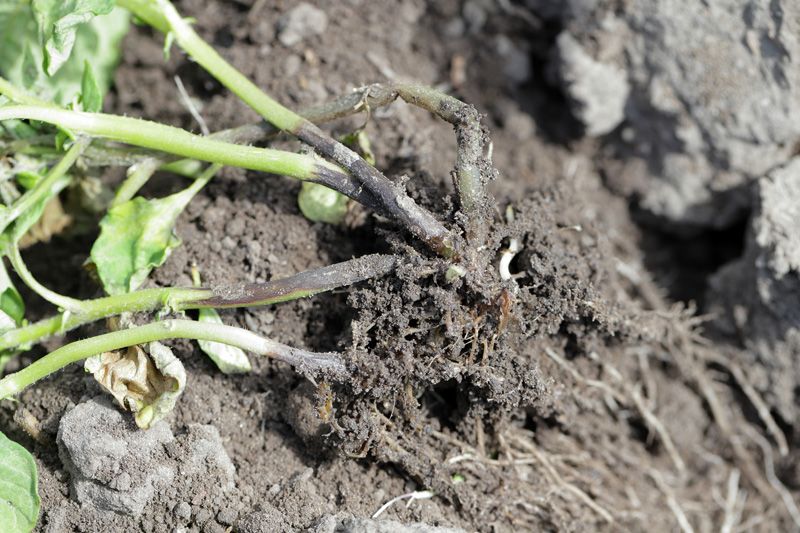
Blackleg- Pectobacterium atrosepticum – Pectobacterium carotovorum subsp. Brasiliensis – Pectobacterium wasabiae – Dickeya dianthicola – Dickeya solani
Blackleg
Common name
Blackleg
Causal agent
It is caused by several pectolytic bacterias and mainly affect potato crops.
Scientific name
Pectobacterium atrosepticum
Pectobacterium carotovorum subsp. Brasiliensis
Pectobacterium wasabiae
Dickeya dianthicola
Dickeya solani
Symptoms & Signs
Blackleg of a potato is characterized by the blackening of the lower stem or the leg of the potato plant, hence the name. It also causes stunting, chlorosis, and wilting of the leaves and decaying of the leaves. The disease appears right after the crop emerges from the field and is more common in young plants.
Transmission
This disease is tuber-borne which means that it develops and spreads through the tubers. It is transferred to healthy tubers during storage by contact or through wind, water, and insects. The bacteria thrive in moist, cool conditions below 25 °C (77 °F).
Time of concern
Early spring and fall
Common hosts
Potatoes
